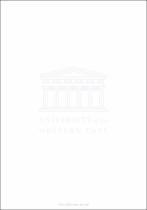| dc.contributor.advisor | Loots, L. | |
| dc.contributor.author | Arnpoful, Johnson | |
| dc.date.accessioned | 2020-11-12T09:44:44Z | |
| dc.date.available | 2020-11-12T09:44:44Z | |
| dc.date.issued | 2004 | |
| dc.identifier.uri | http://hdl.handle.net/11394/7461 | |
| dc.description | Masters of Commerce | en_US |
| dc.description.abstract | This paper uses 3 - month and 12 - month market Negotiable Certificates of ( I . Deposit (NCO) rates to test whether greater transparency by the South African Reserve Bank has reduced expectational errors in the money markets. It does so by comparing the relative differences (between the implied forward rates-as indicators of expected future spot rates-and the actual 'future'spot rates) between the period before greater transparency and the period after greater transparency. Empirical evidence for the sample period indicates that greater ransparency by the South African Reserve Bank co-incided with reduced expectational errors in the money markets. Thus, the implied forward rates after greater transparency may well have been better predictors of future spot rates than before greater transparency, although causality has not been proved. | en_US |
| dc.language.iso | en | en_US |
| dc.publisher | University of Western Cape | en_US |
| dc.subject | Monetary Policy | en_US |
| dc.subject | Transparency | en_US |
| dc.subject | Uncertainty | en_US |
| dc.subject | Term Structure | en_US |
| dc.subject | Financial Markets | en_US |
| dc.subject | Negotiable Certificates of Deposit (NCO), | en_US |
| dc.title | 'How Successful was the South African Reserve Bank in Making Monetary Policy Predictable and Transparent?' | en_US |
| dc.rights.holder | University of Western Cape | en_US |

